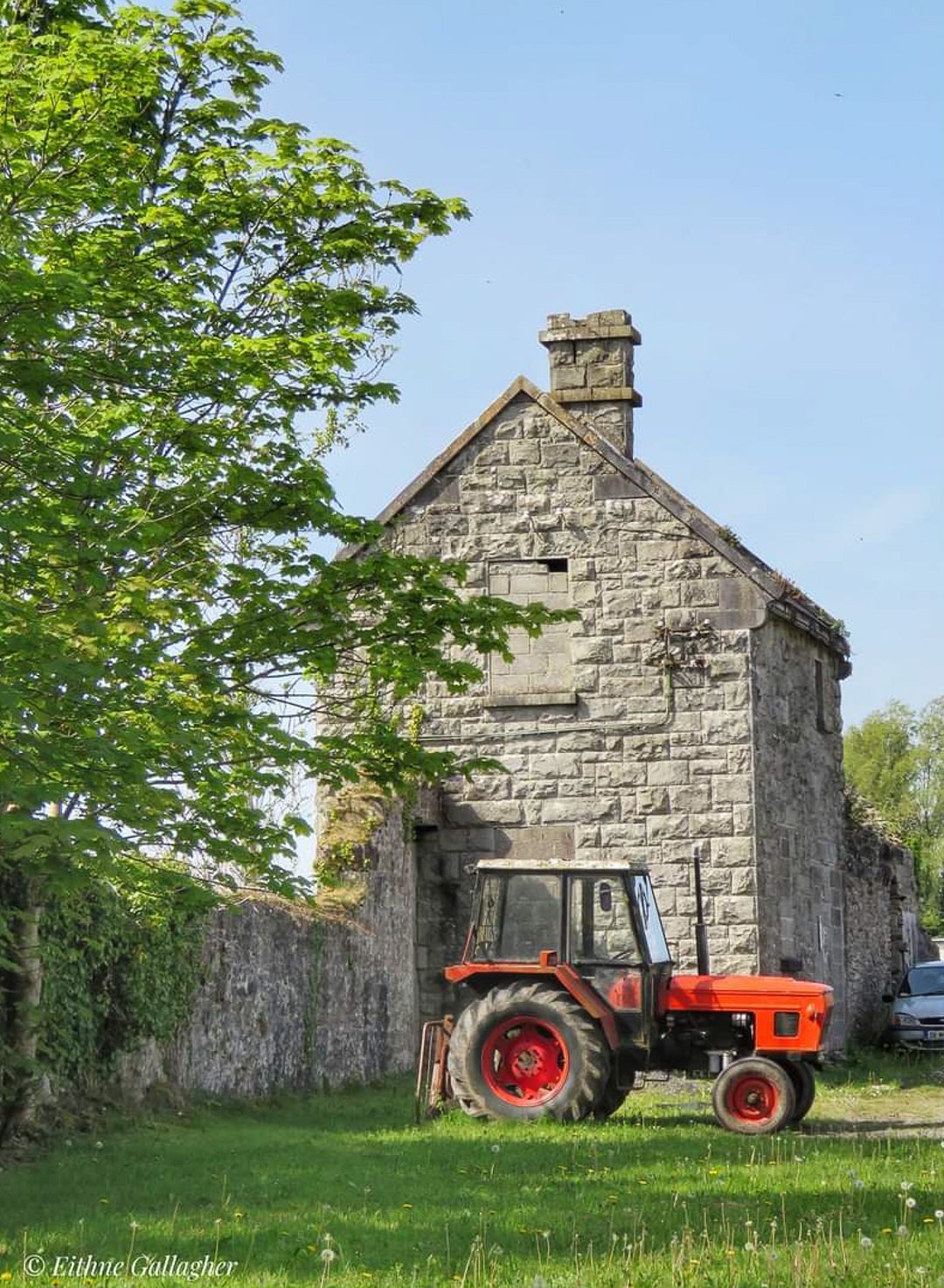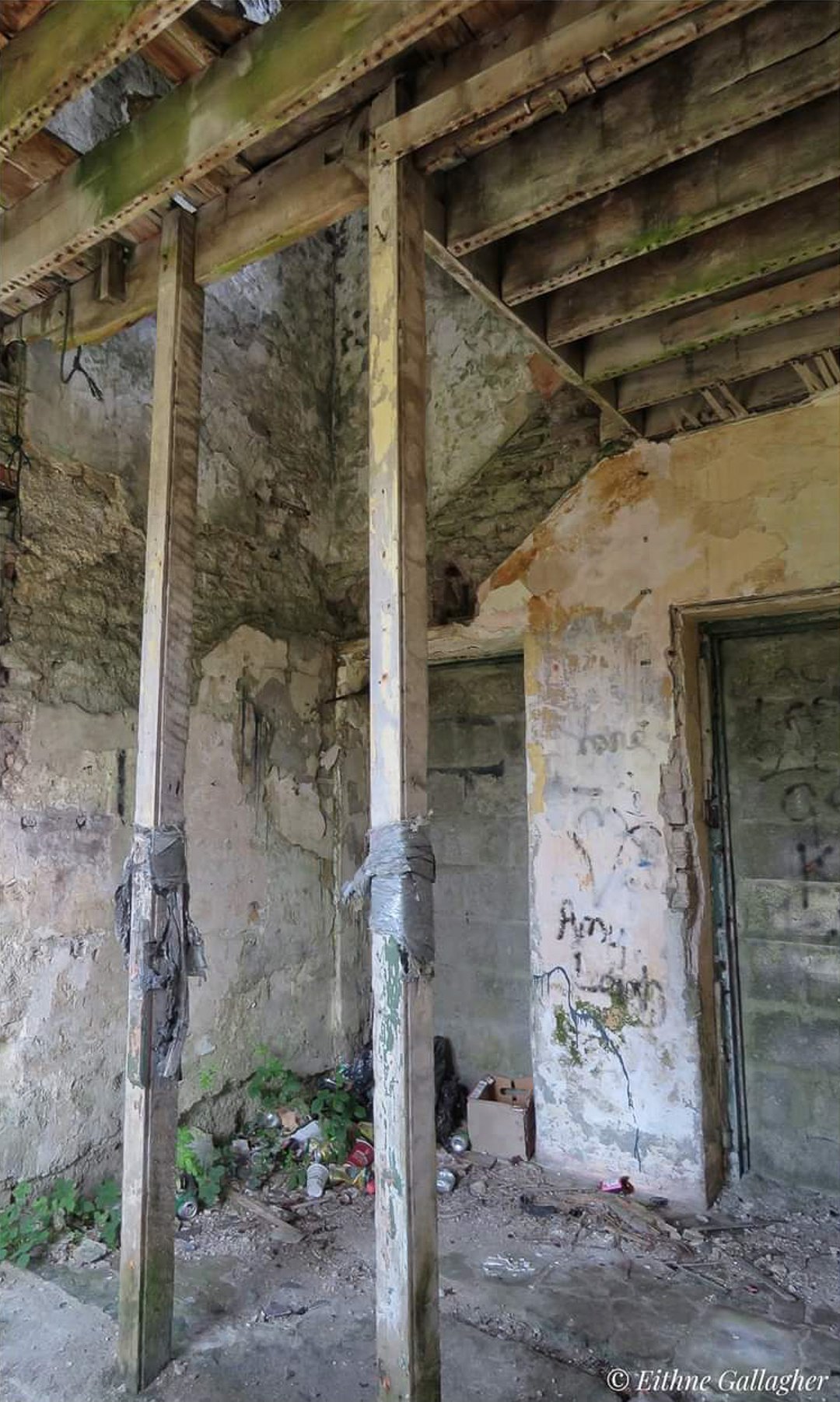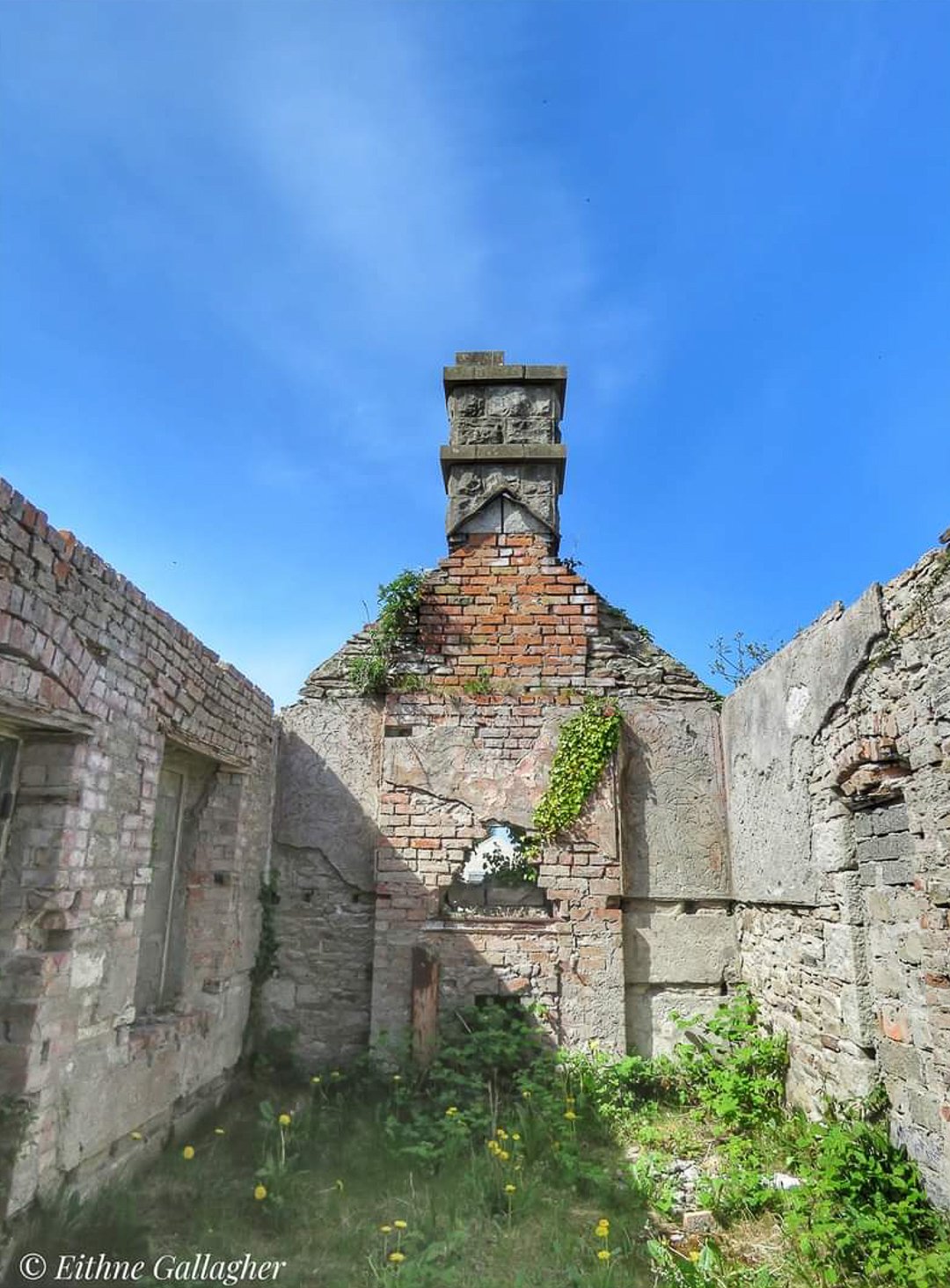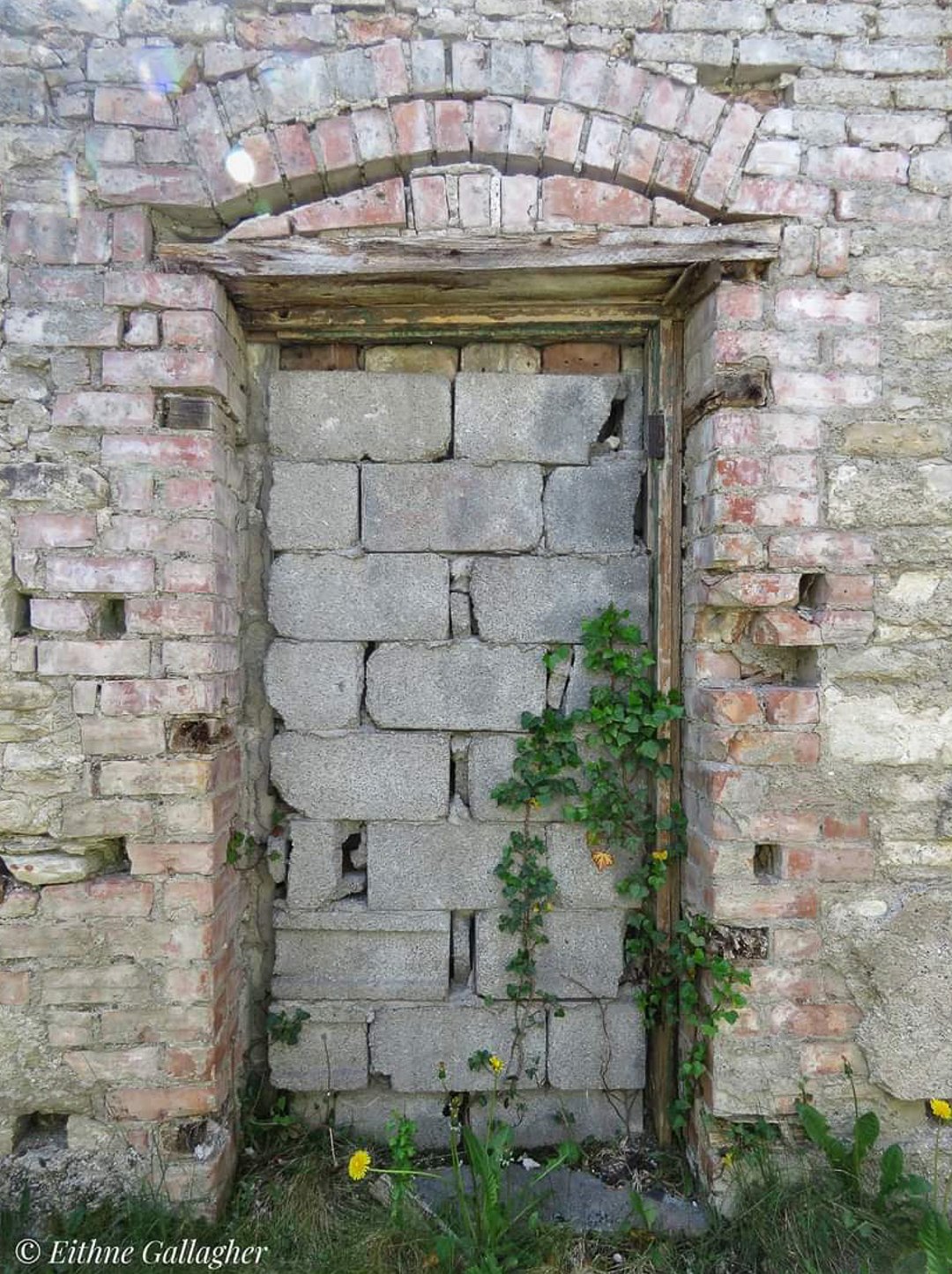The Old Creamery & Railway Station
Ballaghaderreen Station. Ref.1
Welcome to a series of diary entries that capture the essence of our contemplative walks around Ballaghaderreen's heritage sites.
In collaboration with members of the local community, this blog teases out some of the themes relevant to the sites we visit, and the stories shared. In the weeks ahead, this diary will evolve into a multimedia series of audio recordings, videos, and artworks that capture the personal narratives exchanged during these gatherings.
The Creamery
The creamery co-operatives in Ireland were vital centres for local and regional trade, milk processing and social life up until the mid-20th century.
Their decline was mainly due to the advent of larger-scale dairy processing factories, technological advancements in the industry, and increasing competition from more efficient centralised processing facilities. This shift occurred gradually, over several decades.
The original creamery was located at the back of St. Mary’s Hall, opposite the Cathedral. A new larger facility was built in 1908 (now Circular Road). Photo: Ref. 1.
the heart of community life
During our walk to the creamery we were transported back to the 1930s. We shared tales of milk deliveries by horse-drawn carts and the significance of the 'Lazy Wall’, where farmers waited to weigh their milk.
We considered how the Wall represented more than just a space for people to gather. It was a place to share stories, forge relationships, and build meaningful connections between different people within the locality.
We chuckled at the old tradition that marked a young lad's transition to 'manhood', by his ability to lift a heavy milk can; and we pondered the importance of preserving the past, while at the same time embracing the inevitable changes that have shaped many towns and villages across Ireland.
These observations provide some interesting insights for further PLACEWAYS research, particularly the role of public spaces for meaning-making (a point emphasised again during our station walk).
The creamery was more than just a trading centre. It was the heart of the community–where significant social interactions took place, important ‘rites of passage’ for young people were woven into everyday life, and a visceral connection to place was felt.
collaboration was a cornerstone of rural life In the 1930’s
The farmers of Ballaghaderreen were faced with the daunting daily task of transporting their milk to the creamery by horse and cart. To ease this burden, they organised themselves into groups of six farms. Under this arrangement, the farmers took turns in delivering the collective’s milk to the creamery, which meant just one trip a week for each farmer. On the seventh day, the farmer’s wives would churn their own milk to ensure they had enough supplies for the week ahead.
This collaborative effort not only lightened the load for individual farmers, but it also fostered a sense of community and shared responsibility.
It is worth noting that the creamery, as well as the local egg store, were important sources of employment for women in the area. During the 1930s, working full-time at the creamery typically yielded an average monthly wage of 4-6 pounds, providing vital income and economic stability to many women in the community (ref.2).
The Old Railway Station
The next stop on our contemplative walk was the old railway station, where the time worn crumbling facade of the ticket office maintains a majestic presence, despite the passage of countless seasons.
Charles Strickland petitioned for a station to be built because Ballaghaderreen had become a significant trading centre for the whole region. After many years of delay, the Ballaghaderreen to Kilfree branch railway line opened November 2nd, 1874. There were two intermediate halts at Edmondstown and Island Rd.
Once a vital hub on the Midland Great Western line to Sligo, the station facilitated the transportation of goods, including agricultural produce and livestock, alongside three daily passenger trains.
Photo Credit: From the ‘Michael Gallagher Collection’.
As depicted by the photograph above, Ballaghaderreen Railway Station held a significance beyond mere transportation. It served as a poignant focal point for community interaction, where people gathered to bid farewell to loved ones, or welcome family arriving from distant places.
This sentiment was reinforced by a member of our group who shared a poignant recollection of being one of the passengers on 2nd February 1963; the day the train ceased operation. Her vivid storytelling captivated our attention, as she recounted a cherished family excursion, complete with the sound of clinking tea-cups and the gleam of a delightful silver teapot, all aboard the final train to depart from the Great Western Ballaghaderreen line.
Ballaghaderreen Railway Station c.1950s. Source: Ballagha Past & Present Facebook Page
Notably, the station operated without a signal cabin, which was rare in it’s time. The instruments were instead housed within the Station House itself.
The station house was eventually demolished to make way for the new entrance to the town. All that remains is a small part of the platform, the derelict ticket office and the goods store (with it’s long cattle bank platform), which is currently being used for community activities. The water tower and single road engine shed have also been demolished, and a health centre now stands on their site (ref. 3)
A Series of Photographs of the Station’s Ticket Office, by Eithne Gallagher:
our journey continues
The walk from the station to the Ballaghaderreen Community Garden was a moving transition… during which we discussed reviving the railway station site as a place to both anchor and nurture the old and new for future generations.
These snippets merely scratch the surface of the rich conversations shared during our walk. Keep an eye on our groups’s instagram feed for updates on how these stories will evolve.
All of these blogs are active and on-going - so please visit back regularly to check updates. If any historical information is inaccurate, please contact Anna with details: info@annaking.ie
Resources:
Ref. 1: Photos + General Information: Ballaghaderreen Past & Present Facebook Page.
Ref. 2: History Blog - Kathleen Roddy Glynn.
Eithne Gallagher Photography
Ref. 3: www.eiretrains.com
PLACEWAYS is part of the Creative Places Ballaghaderreen project, funded by the Arts Council of Ireland and supported by Roscommon County Council.
Thank you Eithne, for discovering this lovely film about Ballaghadareen Railway Station.











